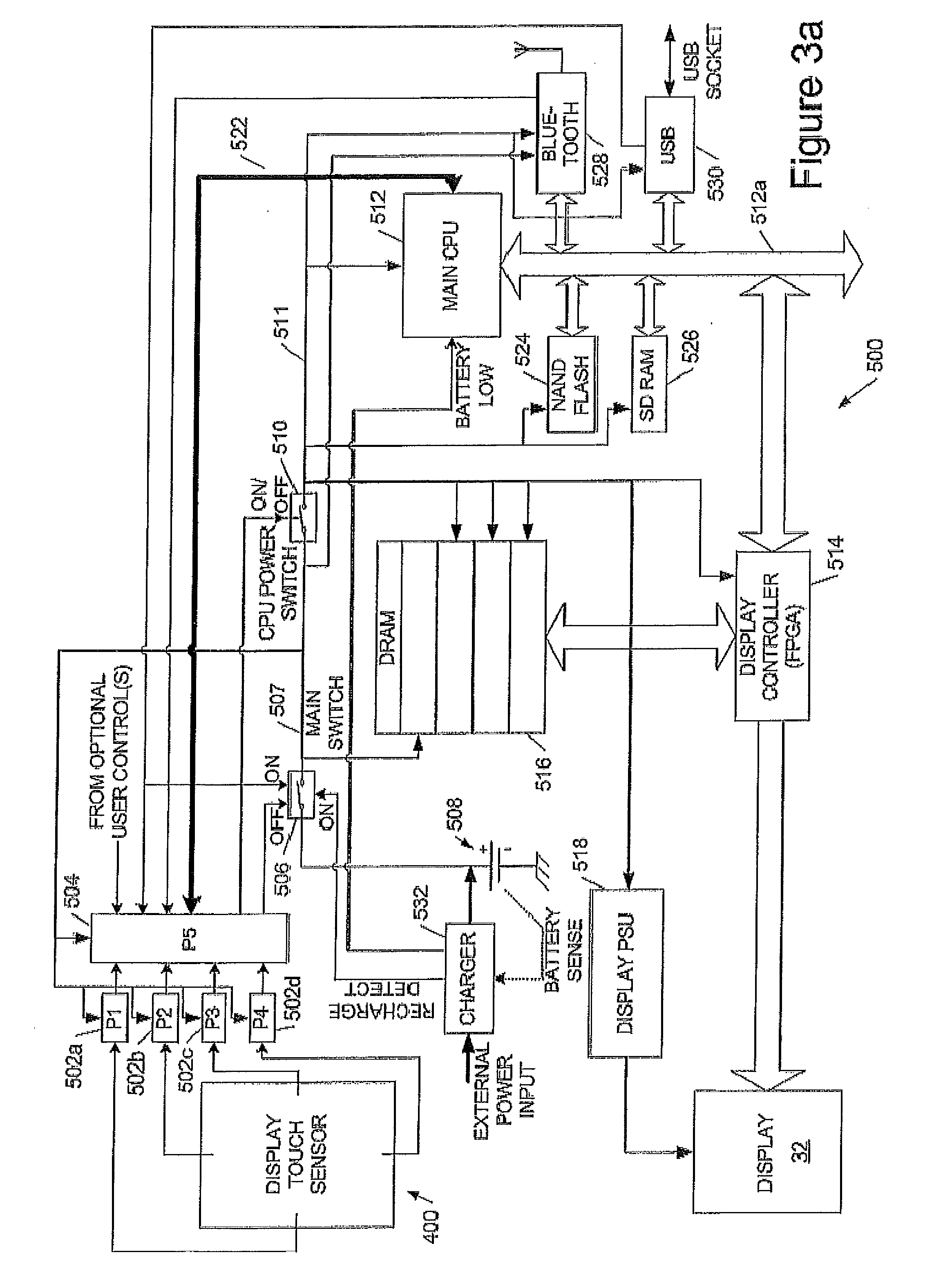Touch Screen Displays
a touch screen display and touch screen technology, applied in instruments, climate sustainability, computing, etc., can solve the problems of data connection and power requirements that are relatively inefficient both in terms of data connections and power requirements, and achieve the effect of improving user experien
- Summary
- Abstract
- Description
- Claims
- Application Information
AI Technical Summary
Benefits of technology
Problems solved by technology
Method used
Image
Examples
Embodiment Construction
[0027]The present inventions relate to improved techniques for implementing touch screen displays, in particular projected capacitance touch screen sensing for large electrophoretic display screens, and to electronic document readers implementing these techniques.
[0028]We first describe an example of an electronic document reading device, to illustrate the context in which embodiments of the invention may be employed. Embodiments of the invention can be especially useful for large screen devices, in particular devices with large, flexible electrophoretic display screens as described further below. However applications of embodiments of the invention are not limited to such devices and also include, for example, a device with an LCD display screen on a glass substrate.
[0029]Referring to FIGS. 1a to 1c, these schematically illustrate an electronic document reading device 10 having a front display face 12 and a rear face 14. As can be seen from FIG. 1c, in preferred embodiments the dis...
PUM
 Login to View More
Login to View More Abstract
Description
Claims
Application Information
 Login to View More
Login to View More - R&D
- Intellectual Property
- Life Sciences
- Materials
- Tech Scout
- Unparalleled Data Quality
- Higher Quality Content
- 60% Fewer Hallucinations
Browse by: Latest US Patents, China's latest patents, Technical Efficacy Thesaurus, Application Domain, Technology Topic, Popular Technical Reports.
© 2025 PatSnap. All rights reserved.Legal|Privacy policy|Modern Slavery Act Transparency Statement|Sitemap|About US| Contact US: help@patsnap.com



